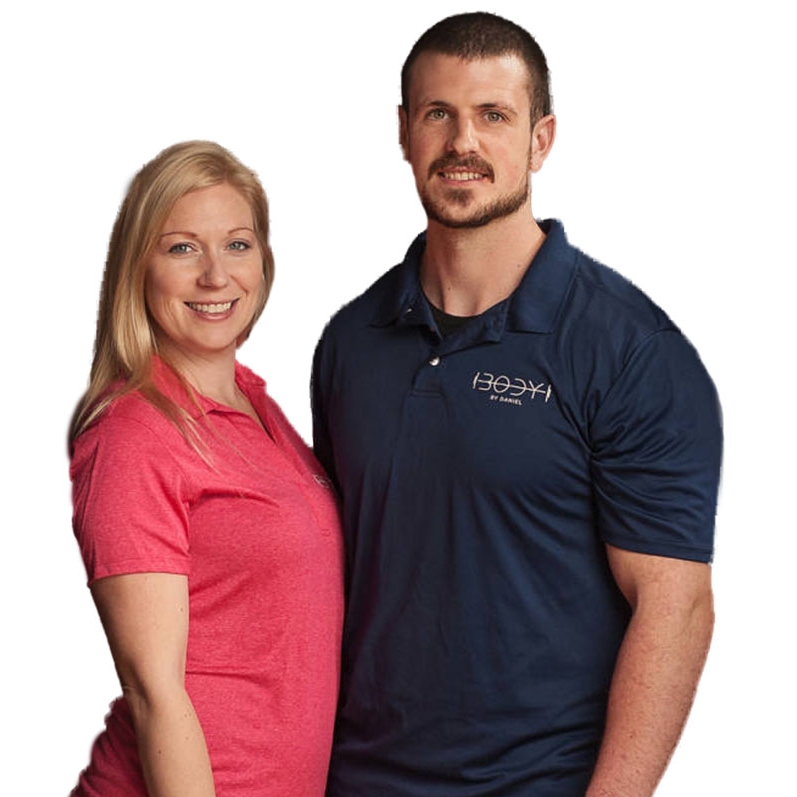Benefits of Fascial Stretch Therapy for Improved Mobility
/Fascial Stretch Therapy (FST) is shaking up how we think about flexibility and recovery. If you've ever felt stiff or tight after a workout—or even just from sitting too long—you’re not alone. Many people struggle with these issues, leading to frustration and a desire for a solution. Luckily, FST offers a fresh approach that focuses on the connective tissue in our bodies known as fascia. This therapy goes beyond simple stretching; it works to release tension and improve overall movement, making everyday activities feel easier and more enjoyable. With so many benefits, from enhanced mobility to faster recovery, it's time to dive into what makes FST an essential practice for anyone seeking to optimize their physical health.
Fascial Stretch Therapy (FST) significantly enhances mobility by improving joint range of motion, which allows for greater movement fluidity. Furthermore, FST aids in reducing muscle soreness and stiffness, contributing to faster recovery times and better overall physical performance.
Improved Flexibility and Joint Mobility
When it comes to flexibility, traditional stretching techniques often leave much to be desired, focused mainly on the muscles themselves. However, FST dives deeper, much like a skilled surgeon, targeting the intricate web of fascia that encases and supports your muscles and joints. This means you aren’t just enhancing your range of motion; you’re also enriching your overall physical performance. By engaging in FST, you open up possibilities that may have previously felt constrained.
Think of it like discovering a secret passageway in an old castle—once you find it, everything suddenly flows more freely! The trainer guides you through specialized movements that not only stretch but effectively relocate restrictions within your body. When a joint's capsule opens up, greater extension and rotation become available, allowing for previously unheard-of fluidity.
It’s important to note how this enhancement translates into everyday life. Suddenly, activities such as gardening or playing with your children become not just manageable, but enjoyable. Each movement feels more natural. In fact, participants in various FST assessments reported reduced muscle soreness post-exercise thanks to increased circulation around their joints. This not only aids in recovery but also prevents the onset of complications related to mobility limitations.
Overall, the benefits aren’t merely about stretching muscles—they're about addressing the connective tissues that hold everything together.
In practical terms, this means that by targeting the fascia through FST practices—a blend of dynamic stretches and proprioceptive refinement—you can experience real change over time. Health professionals emphasize that it's crucial to stay consistent with these therapies; ongoing engagement leads to prolonged elasticity and resilience within the fascia itself.
The advantages of this therapy extend beyond flexibility and mobility and play an integral role in preparing your body for peak performance in demanding activities.
Maximizing Athletic Performance
One of the most compelling benefits of Fascial Stretch Therapy (FST) is its ability to enhance overall athletic performance. As athletes look for ways to gain a critical edge over their competitors, incorporating FST into their training regimes can be particularly effective. By addressing fascial restrictions, FST improves flexibility and significantly alters how muscle forces are transmitted throughout the body. This principle is essential because improved force transmission enhances power output during explosive movements like sprinting and jumping, allowing athletes to perform at their peak.
Research corroborates this notion, revealing that enhanced fascial flexibility leads to better coordination among muscle groups. When fascia is adequately stretched and released through FST, muscle fibers can work more harmoniously. Imagine a well-tuned orchestra: each instrument playing its part perfectly in harmony creates beautiful music. Similarly, when your muscles and fascia communicate effectively, your physical performance becomes more fluid and powerful.
What’s equally fascinating is that this methodology is not limited to elite athletes. Any individual engaged in physical activity can benefit from understanding and incorporating these principles into their routine for better flexibility and recovery.
By focusing on enhancing the flexibility of connective tissues through methods like FST, athletes improve performance metrics across various sports disciplines. Enhancing functional mobility lays the groundwork for a foundation that elite-level strength training alone cannot provide. Sufficient range and sustainable movement patterns inevitably support healthy biomechanics, leading to better performance outcomes across the board.
As athletes recognize that maximizing performance means encompassing all dimensions of fitness—including flexibility—they'll discover the transformative effects of integrating therapies like FST.
As we further explore this approach, it's essential to consider how effective it is in alleviating discomfort and tension in muscles, paving the way for even greater functionality and relief in exercise activities.
Reducing Muscle Tension and Pain
A staggering number of people experience muscle tension as a daily reality, often due to modern lifestyles filled with sedentary activities and high-stress environments. Fascial Stretch Therapy (FST) serves as an approach that addresses this growing concern head-on. By focusing on the fascial tissues surrounding muscles and joints, FST creates pathways for relief, not just from tension but also from persistent pain.
Mechanism Behind Pain Relief
The underlying science behind FST's effectiveness lies in its ability to increase blood flow while releasing built-up tension within the fascia. When our bodies are subjected to repetitive stress or remain cramped in awkward positions, fascial tissues can develop tightness that contributes significantly to discomfort. This is where FST steps in, applying gentle stretching techniques that target these tissues specifically. The goals are straightforward: to improve flexibility, enhance circulation, and dissolve harmful knots that lead to referred pain—pain that manifests in areas far from the origin of the problem.
With FST enabling individuals to manage pain without reliance on medications, it's clear how this therapy can fundamentally shift body mechanics and pave the way for long-lasting improvements. As we explore further, it's important to consider how the benefits of such therapies extend into areas like posture and alignment for a comprehensive approach to wellness.
Boosting Overall Health
Fascial Stretch Therapy (FST) isn't merely an exercise; it's a lifestyle change that promotes a range of health benefits that many people often overlook. One of the most remarkable outcomes of regular FST sessions is improved circulation. As you lengthen and stretch your fascia, blood flow increases to your muscles and organs, aiding recovery and the general functioning of your body. It's like giving your cells a refreshing drink after a long hike through a desert. This enhanced blood flow leads to better nutrient delivery to your tissues and more efficient removal of waste products, creating a cycle of positive health.
Moreover, studies have shown that consistent engagement in fascial stretching can lower stress hormones like cortisol. By focusing on slow, deliberate movements paired with deep breathing, FST encourages relaxation and mindfulness. This contrast with traditional workout environments—often frenetic and high-pressure—makes FST a serene alternative for anyone looking to unwind while improving their health.
According to recent findings, clients who regularly participate in fascial stretching not only experience these physical improvements but also report a significant reduction in anxiety levels.
Beyond simply feeling good after a session, many individuals have noted tangible changes in their lives after incorporating FST. For instance, better sleep quality stands out as a common benefit. Those who engaged with FST found themselves falling asleep faster and enjoying deeper rest. Such changes point toward how our bodies react favorably when we treat them with care—allowing us to wake up refreshed and ready for the challenges that lie ahead.
Evaluating Suitability of FST
While motivations for beginning FST may differ, almost everyone can benefit from this therapy to enhance their overall wellbeing and to tackle their current health and fitness goals. The process begins with an initial consultation, where you'll have an open conversation with a certified trainer about your health history, fitness goals, and any injuries or conditions that may affect your treatment. This dialogue is key; it enables the practitioner to get a sense of your overall wellness and what you hope to achieve through FST.
Next comes the physical assessment. This isn't just a casual checkup; it's a crucial step that involves several tests designed to measure your fascial and muscular flexibility, alignment, and overall mobility. Through specific movements and observations, the practitioner can identify any restrictions or areas that may require special attention. Imagine this as a diagnostic appointment at the doctor's office—essentially, you're getting an understanding of how well your body moves in space.
Having a comprehensive look at your physical state allows for more effective planning.
After these evaluations, it's time for the personalized plan. Based on insights gathered from both the initial consultation and the physical assessment, a customized stretching regimen will be created for you. This plan aims to target specific areas of concern while also considering your personal fitness goals and lifestyle preferences. Think of this as having a tailored dress or suit made just for you—it’s all about fit and function, ensuring that every stretch aligns perfectly with your needs.
Evaluating the suitability of FST allows you not only to gain maximum benefits but also to minimize potential risks, making it an effective strategy for anyone looking to improve their mobility and recovery.
Incorporating Fascial Stretch Therapy into your routine may transform how you feel and move. For personalized guidance and support, connect with us at One Body Training.






